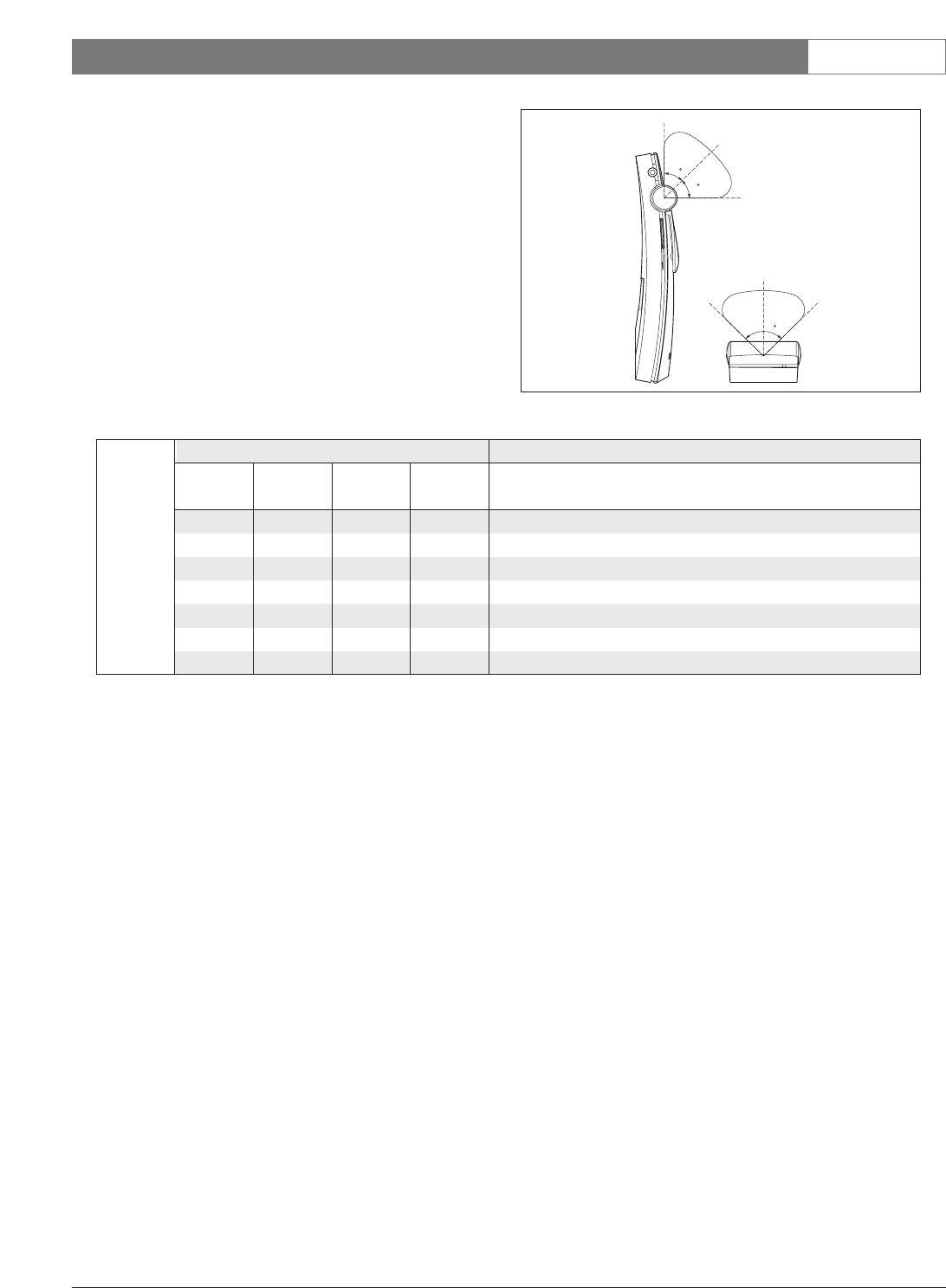
1.2.4 Carriers and channels
The Integrus system can transmit up to 8 different car-
rier signals (depending on the transmitter type). Each
carrier can contain up to 4 different audio channels.
The maximum number of channels per carrier is
dependent on the selected quality modes. Stereo sig-
nals use twice as much bandwidth as a mono signals,
premium quality uses twice as much bandwidth as
standard quality.
Per carrier a mix of channels with different quality
modes is possible, as long as the total available band-
width is not exceeded. The table below lists all possible
channel combinations per carrier:
1.3 Aspects of infra-red
distribution systems
A good infra-red distribution system ensures that all
delegates in a conference venue receive the distributed
signals without disturbance. This is achieved by using
enough radiators, placed at well planned positions, so
that the conference venue is covered with uniform IR-
radiation of adequate strength.
There are several aspects that influence the uniformity
and quality of the infra-red signal, which must be con-
sidered when planning an infra-red radiation distribu-
tion system. These are discussed in the next sections.
1.3.1 Directional sensitivity of the receiver
The sensitivity of a receiver is at its best when it is
aimed directly towards a radiator. The axis of maxi-
mum sensitivity is tilted upwards at an angle of 45
degrees (see figure 1.4). Rotating the receiver will
decrease the sensitivity. For rotations of less than
+/- 45 degrees this effect is not large, but for larger
rotations the sensitivity will decrease rapidly.
1.3.2 The footprint of the radiator
The coverage area of a radiator depends on the num-
ber of transmitted carriers and the output power of the
radiator. The coverage area of the LBB 4512/00
radiator is twice as large as the coverage area of the
LBB 4511/00. The coverage area can also be doubled
by mounting two radiators side by side. The total
radiation energy of a radiator is distributed over the
transmitted carriers. When more carriers are used, the
coverage area gets proportionally smaller. The receiver
requires a strength of the IR signal of 4 mW/m
2
per
carrier to work without errors (resulting in a 80 dB
S/N ratio for the audio channels). The effect of the
number of carriers on the coverage area can be seen in
figure 1.5 and figure 1.6. The radiation pattern is the
area within which the radiation intensity is at least the
minimum required signal strength.
INTEGRUS | Installation and User Instructions | System description and planning en | 3
Bosch Security Systems | 2005-04 | 3122 475 22015en
Channel quality
Possible
number of
channels
per carrier
Mono Mono Stereo Stereo
Bandwidth
Standard Premium Standard Premium
4
4 x 10 kHz
21
2 x 10 kHz and 1 x 20 kHz
21
2 x 10 kHz and 1 x 10 kHz (left) and 1 x 10 kHz (right)
11
1 x 20 kHz and 1 x 10 kHz (left) and 1 x 10 kHz (right)
2
2 x 10 kHz (left) and 2 x 10 kHz (right)
2
2 x 20 kHz
1 1 x 20 kHz (left) and 1 x 20 kHz (right)
45
45
90
Figure 1.4 Directional characteristics of the receivers


















